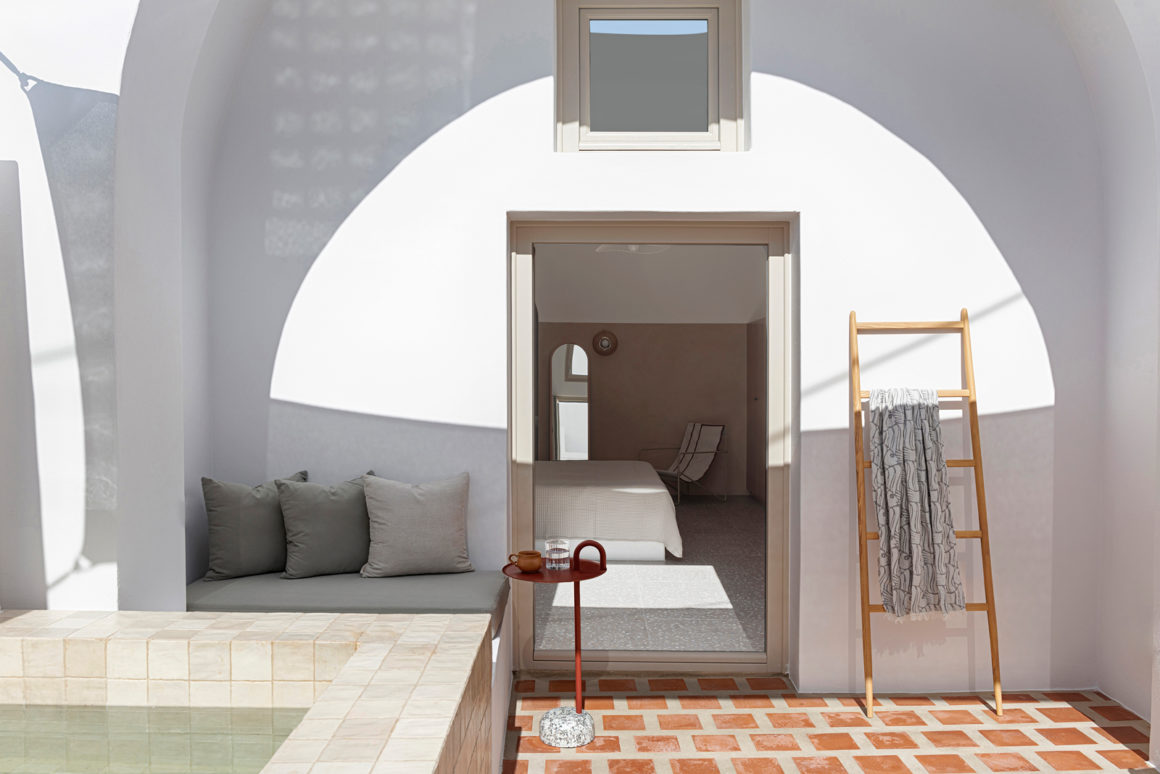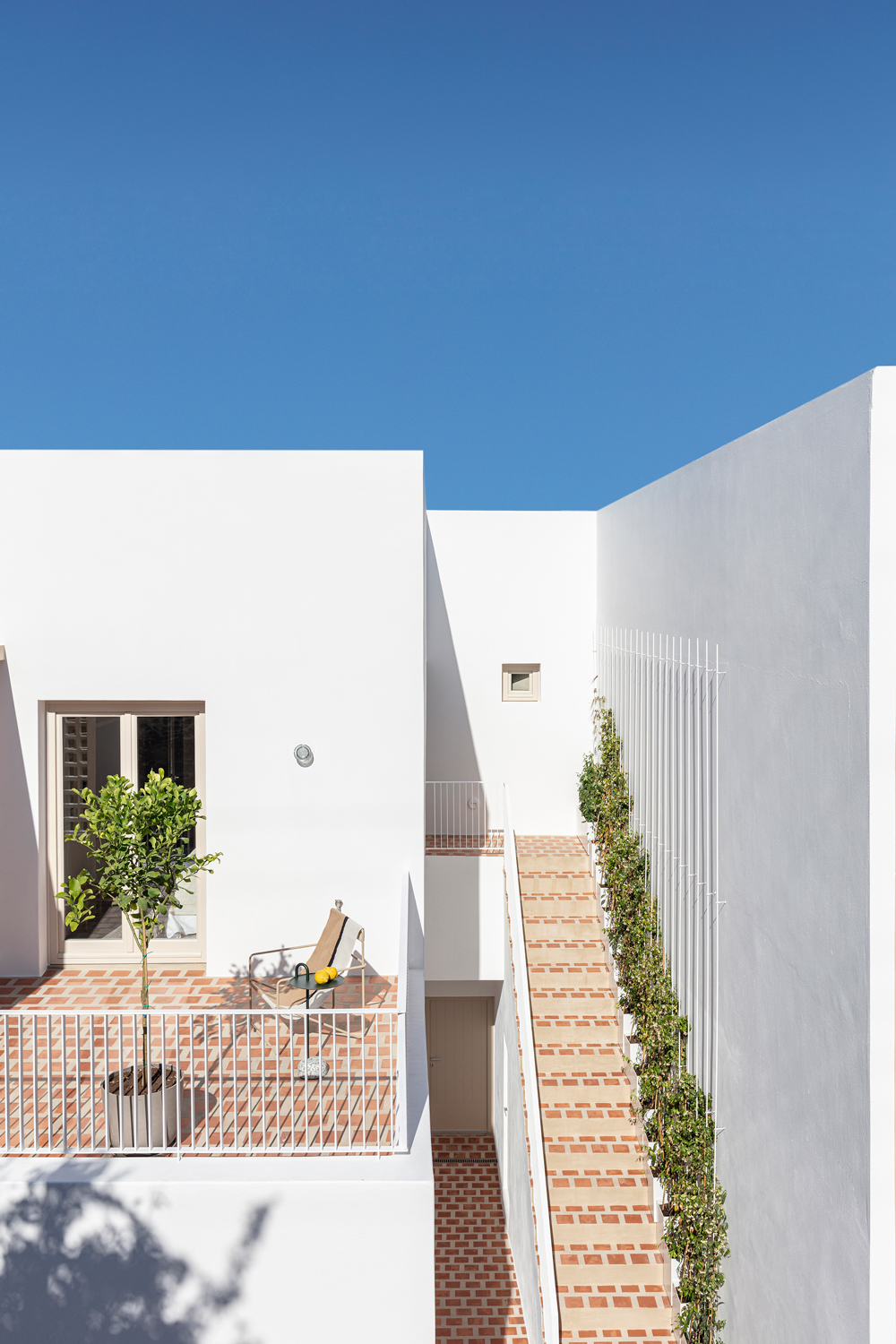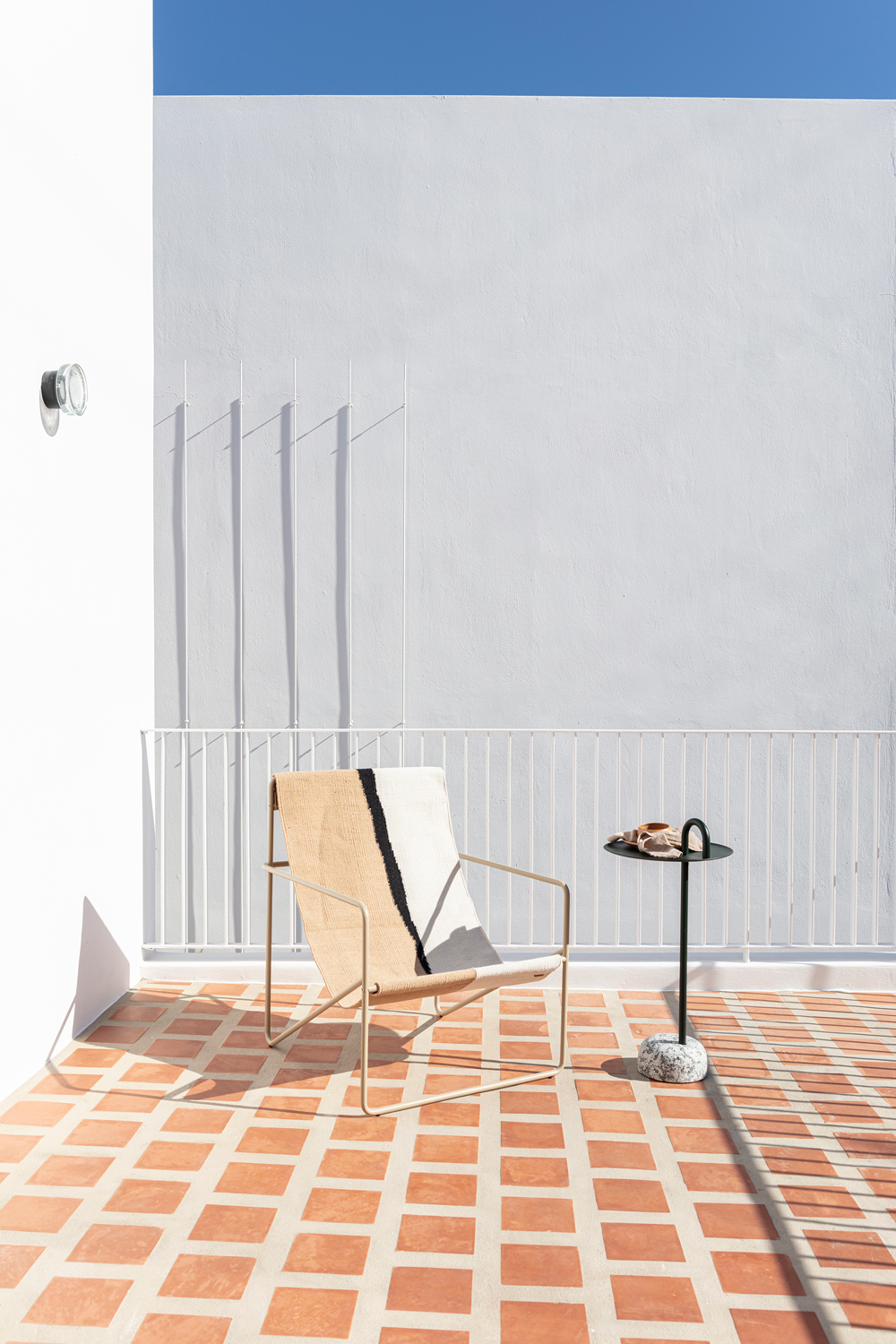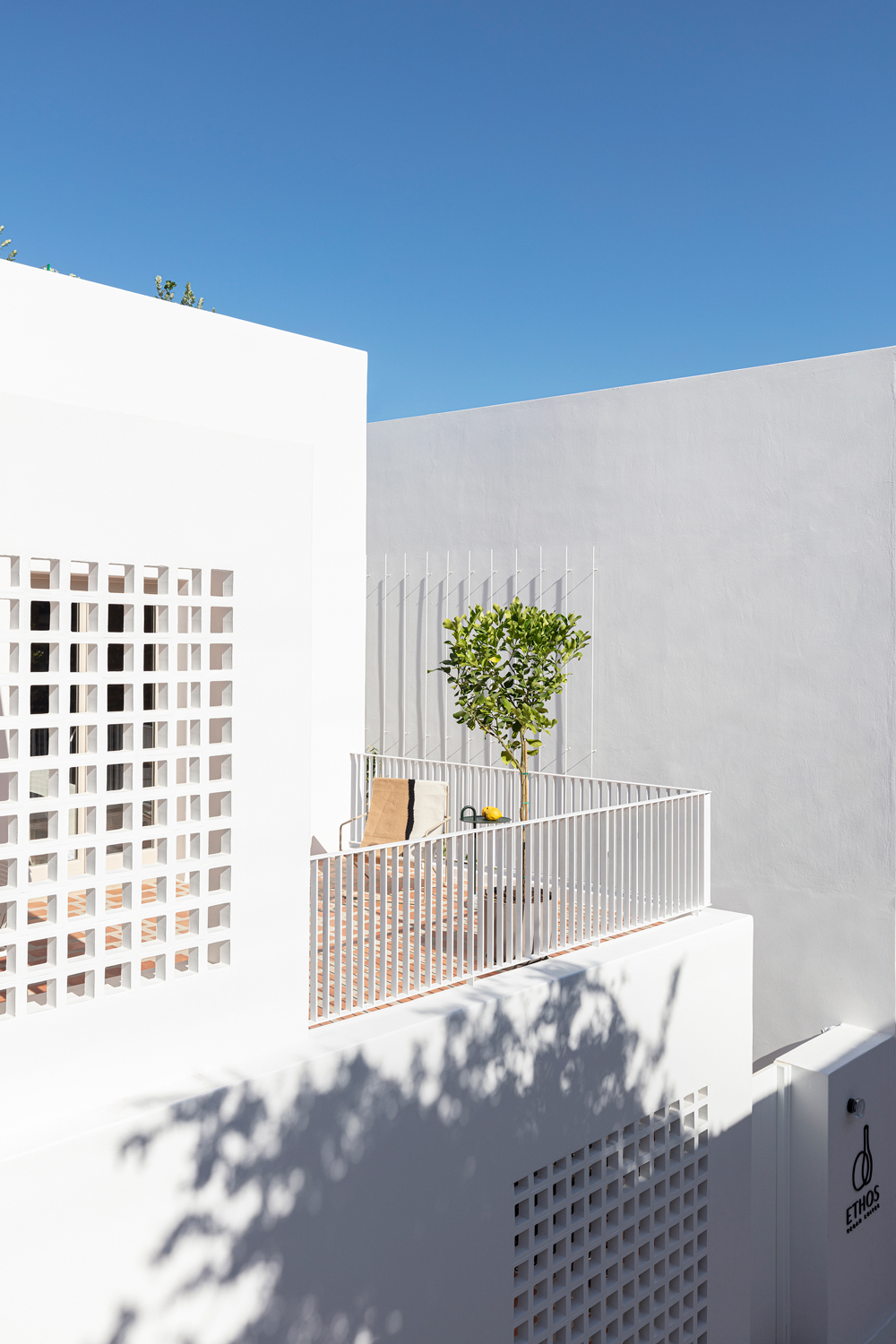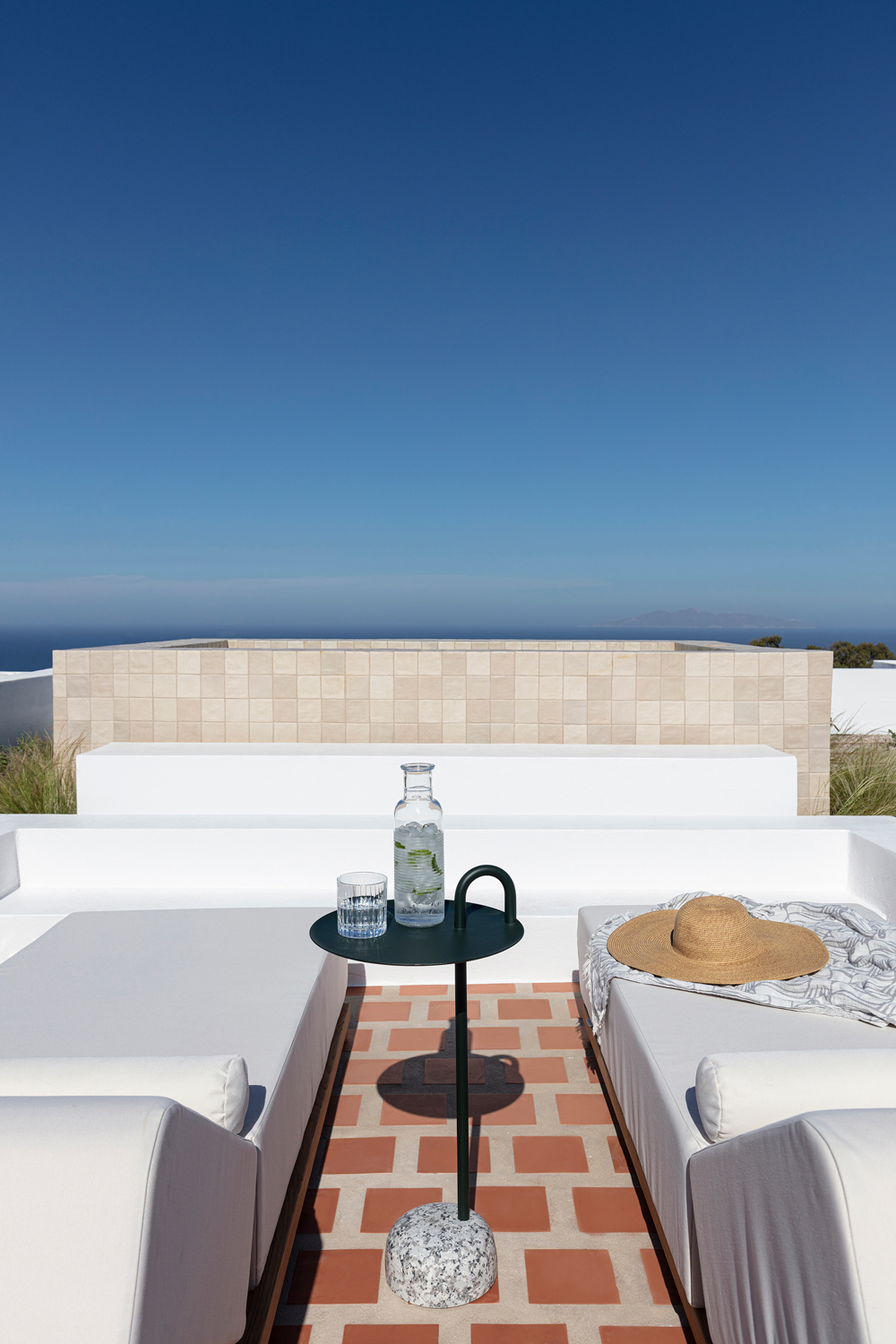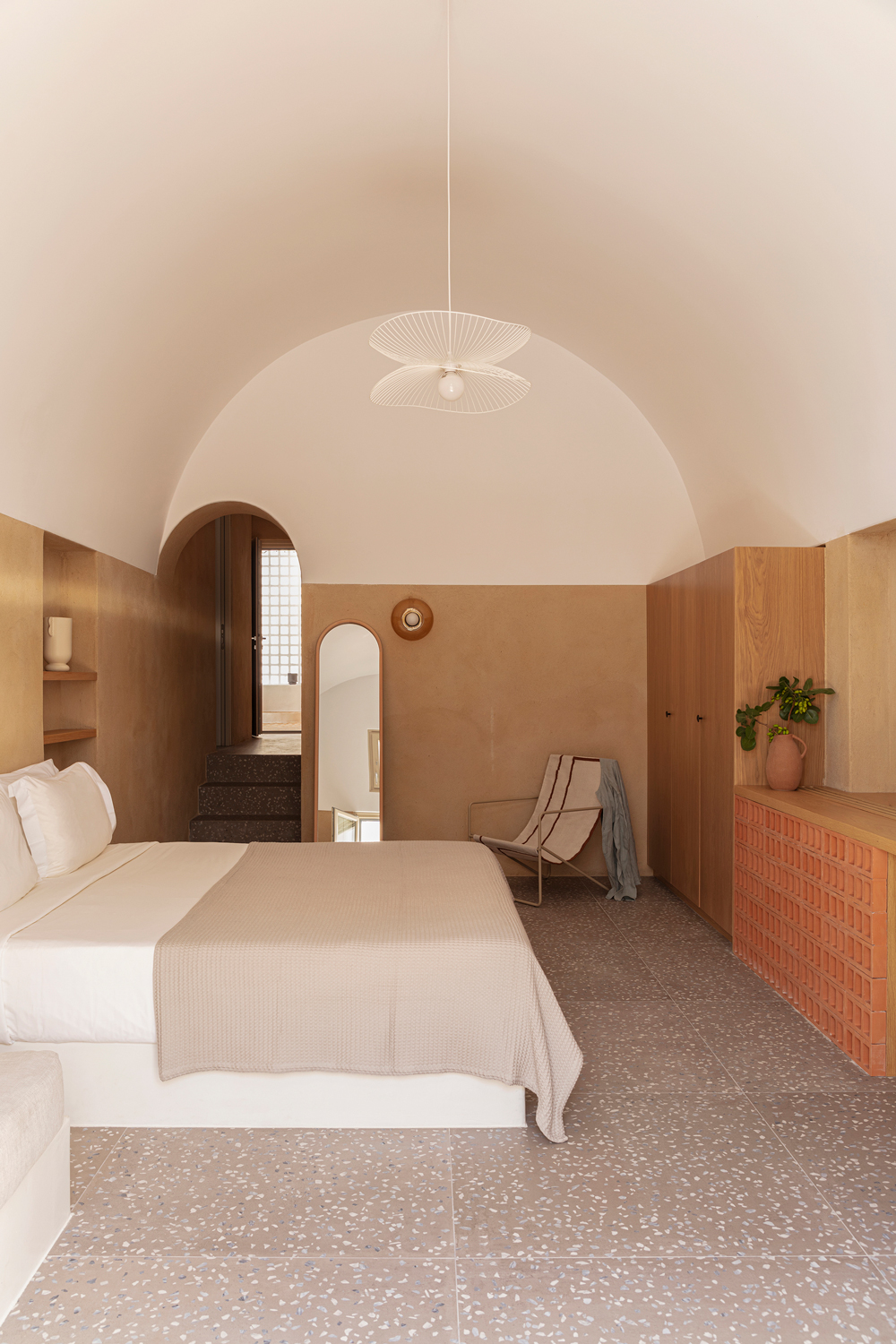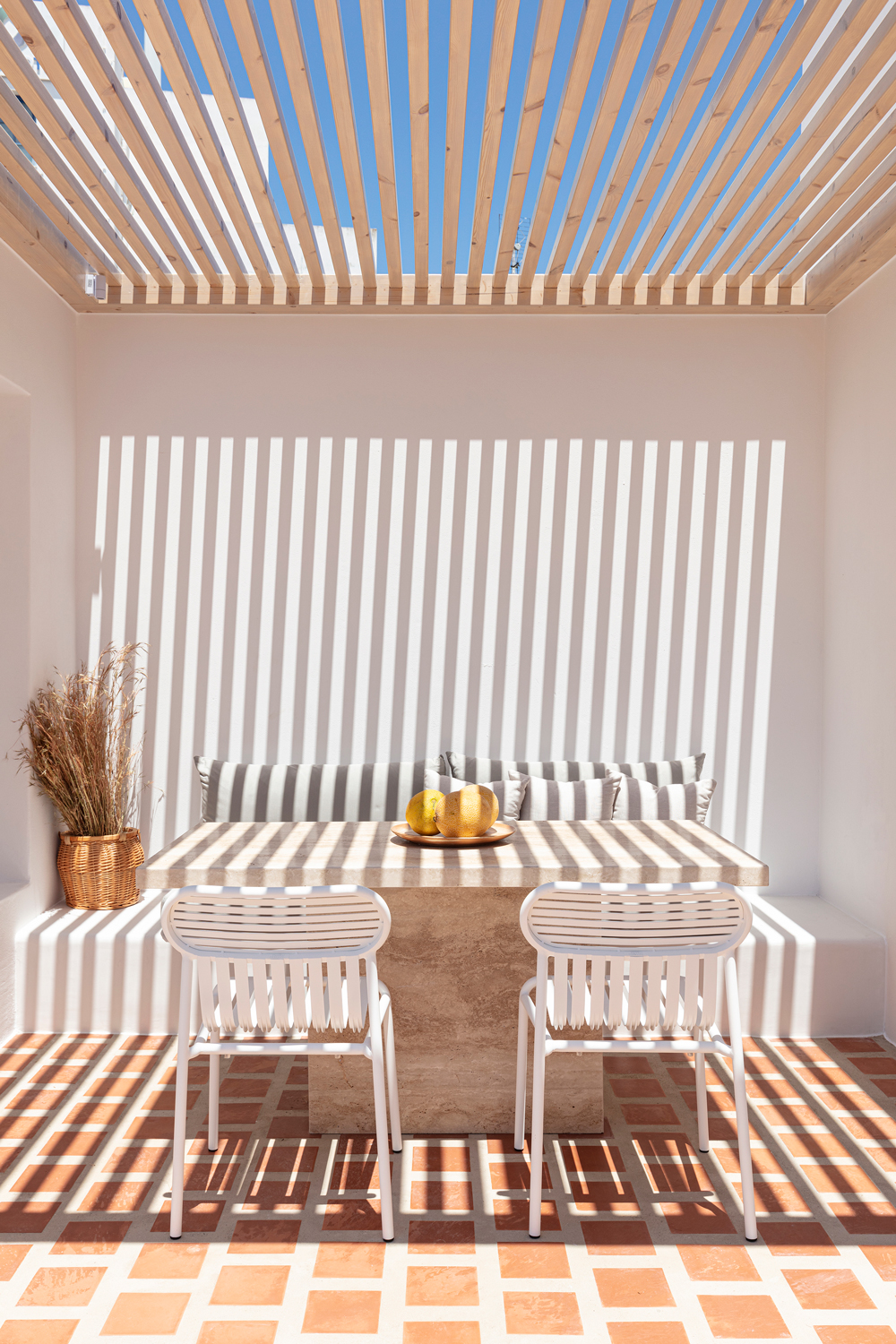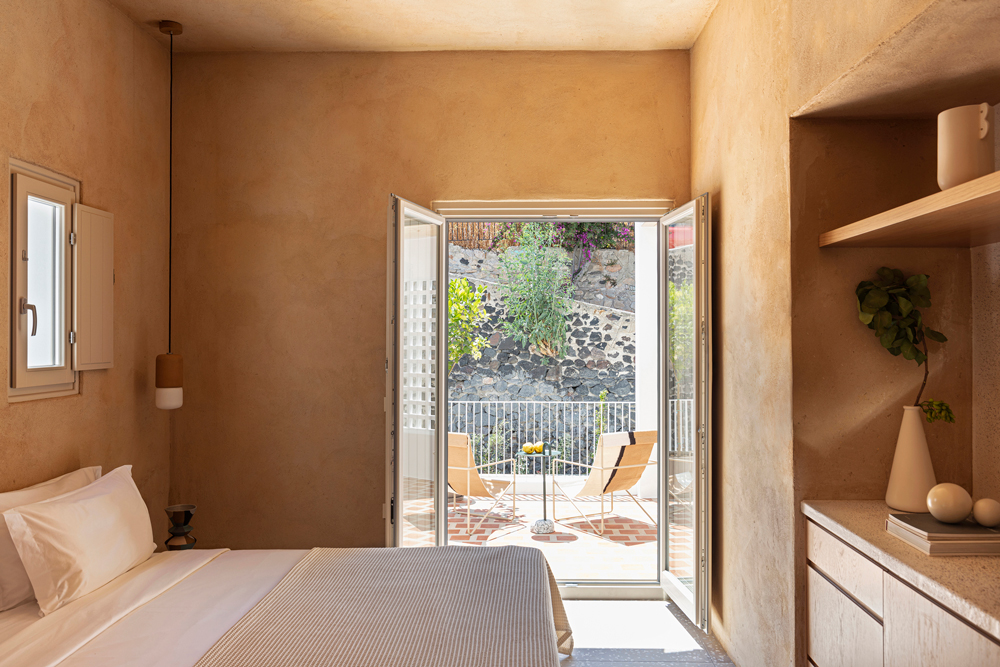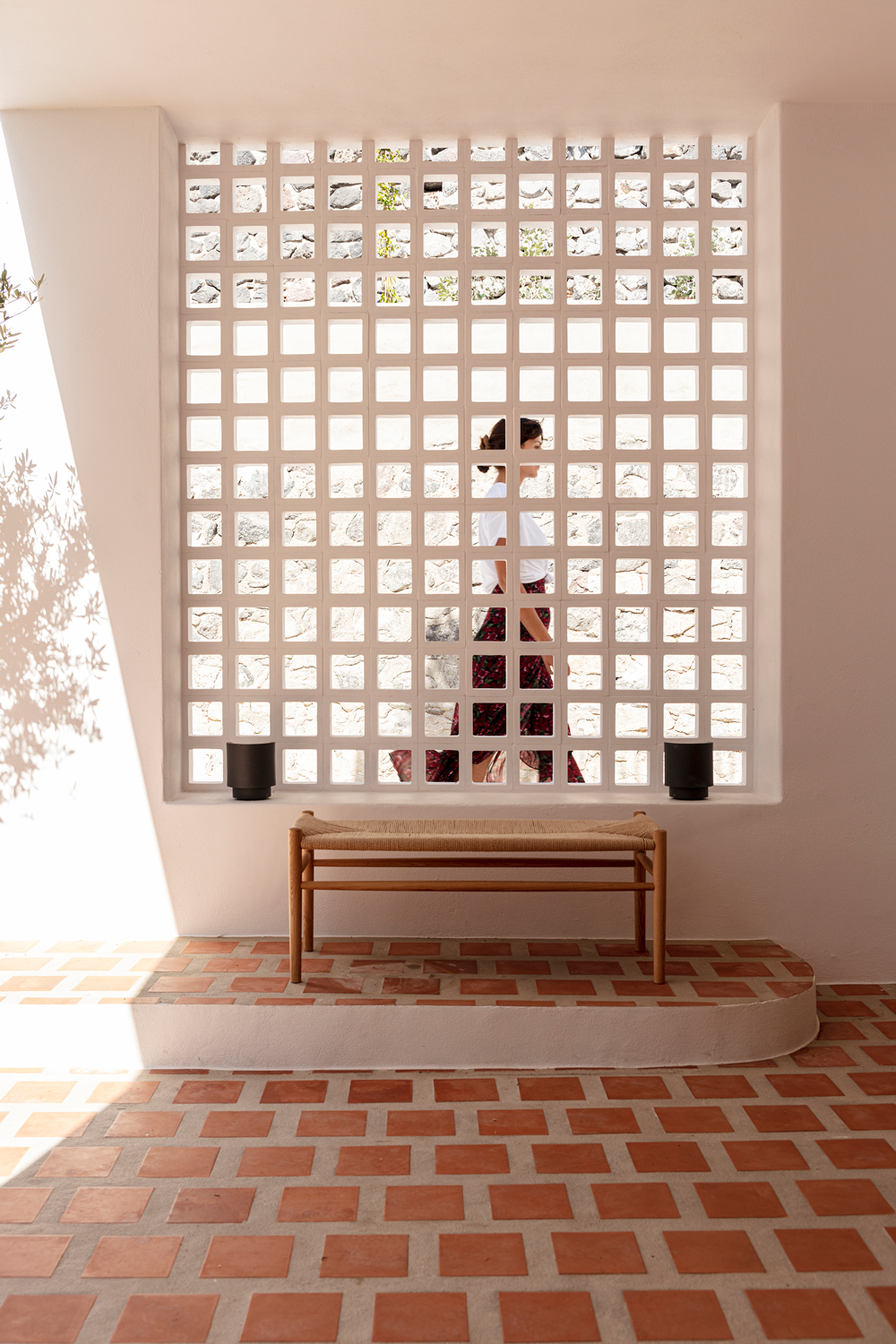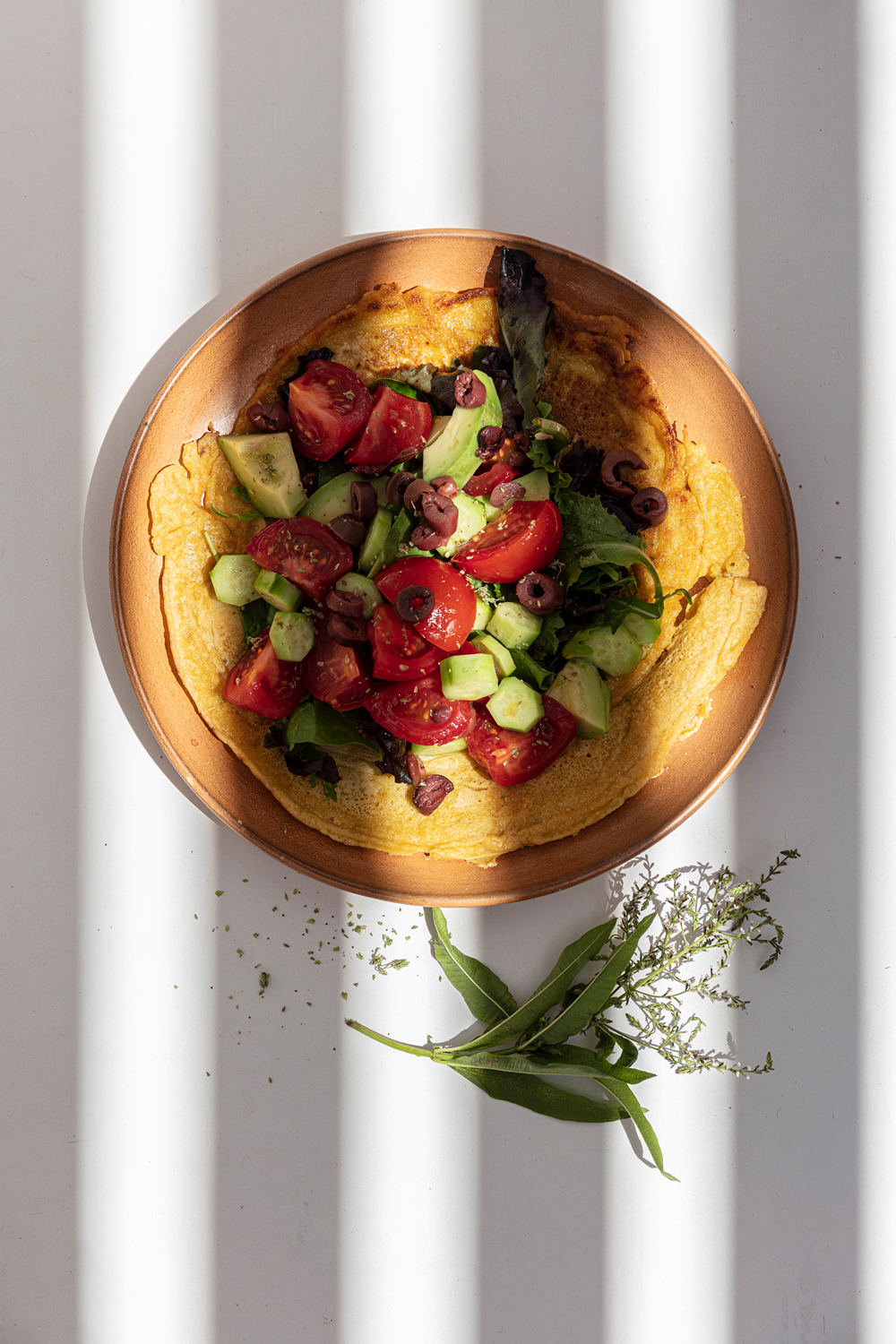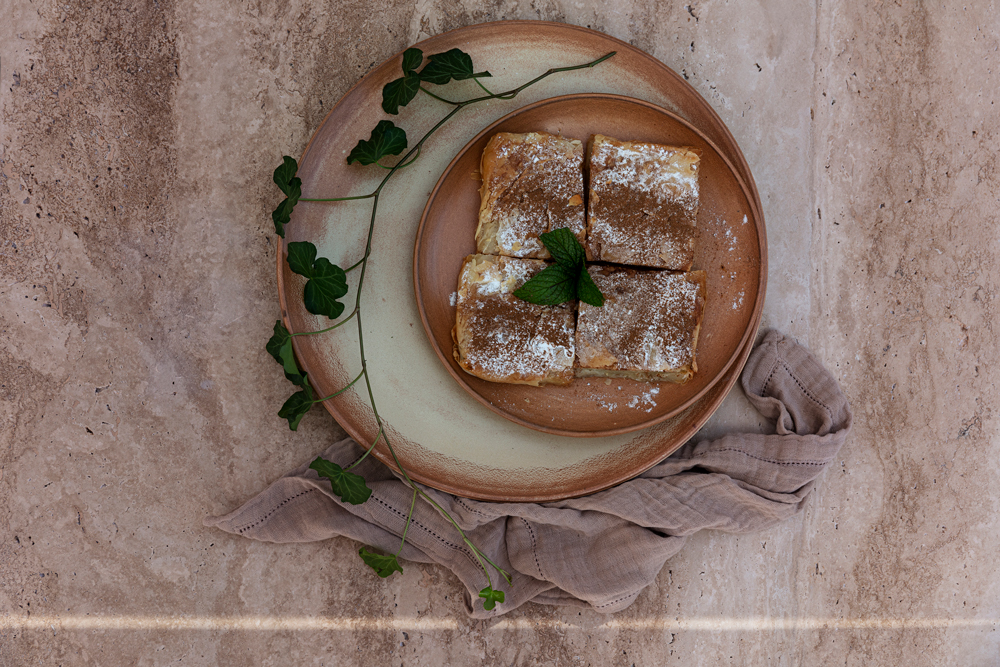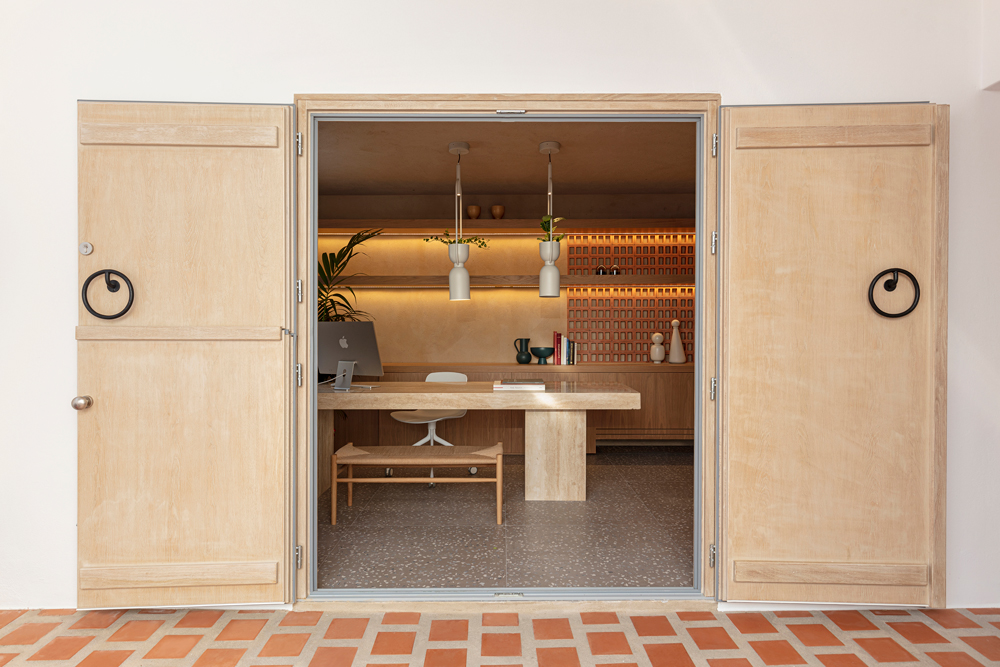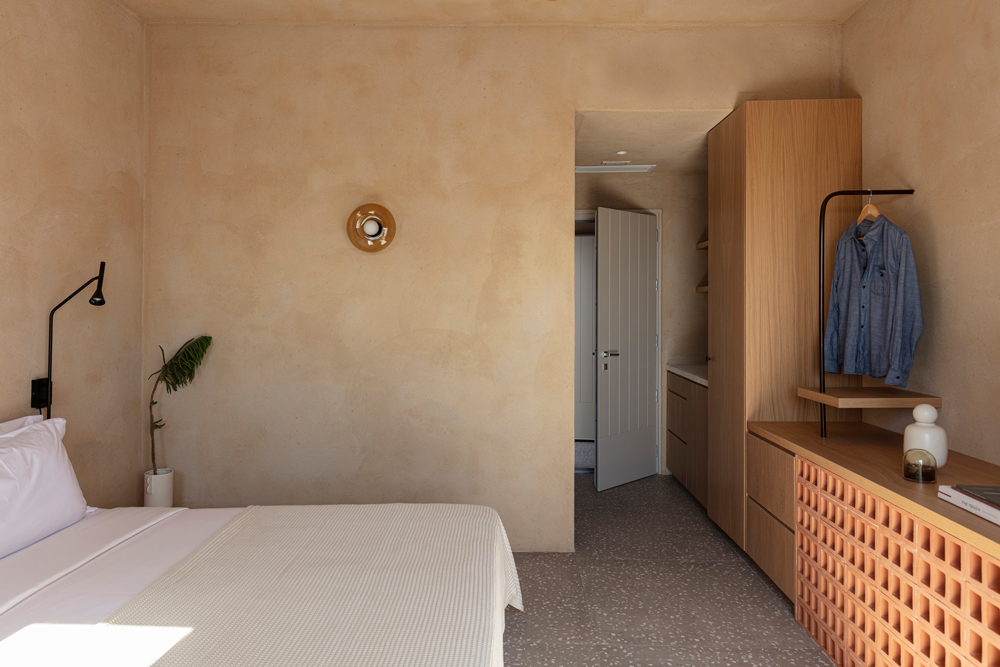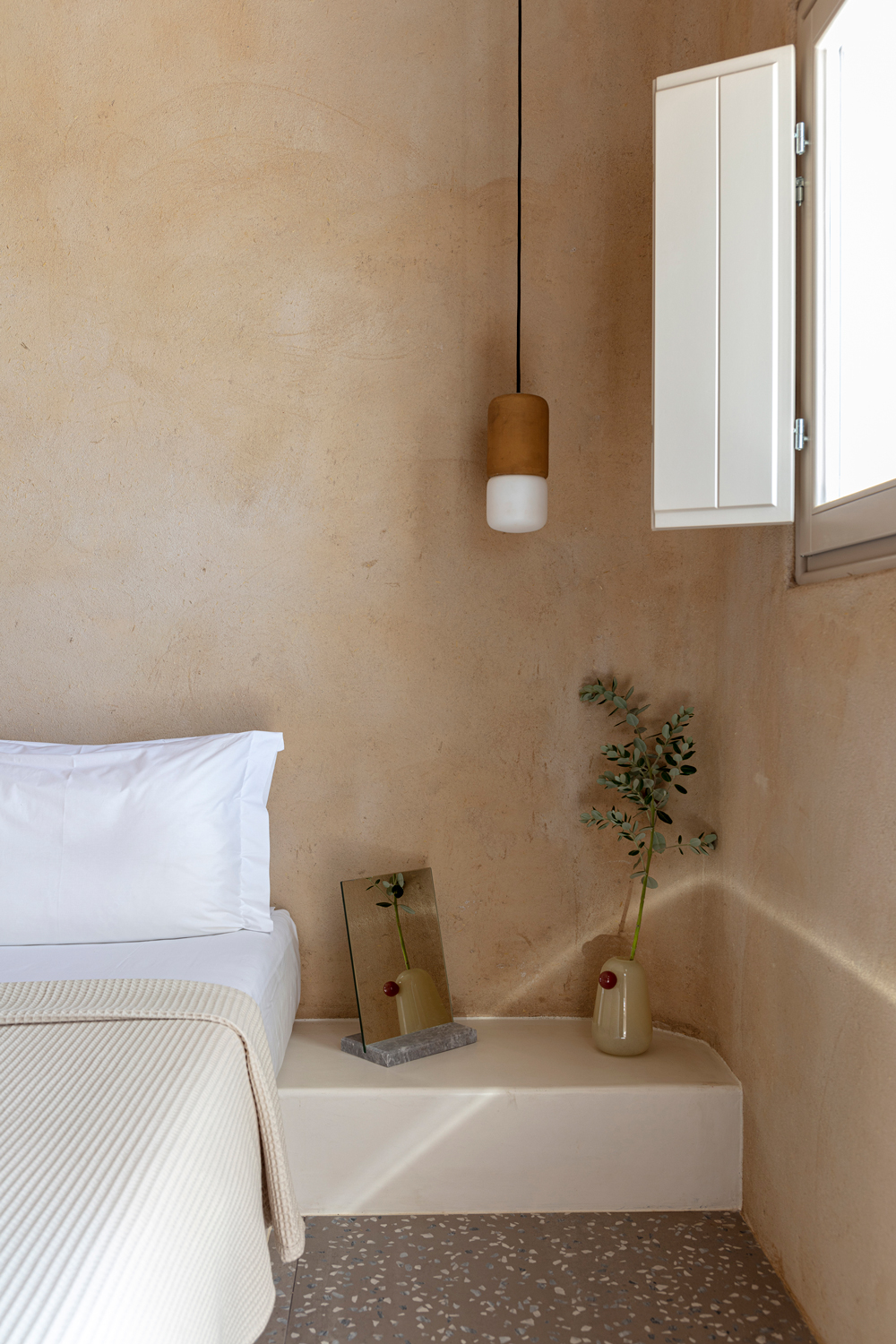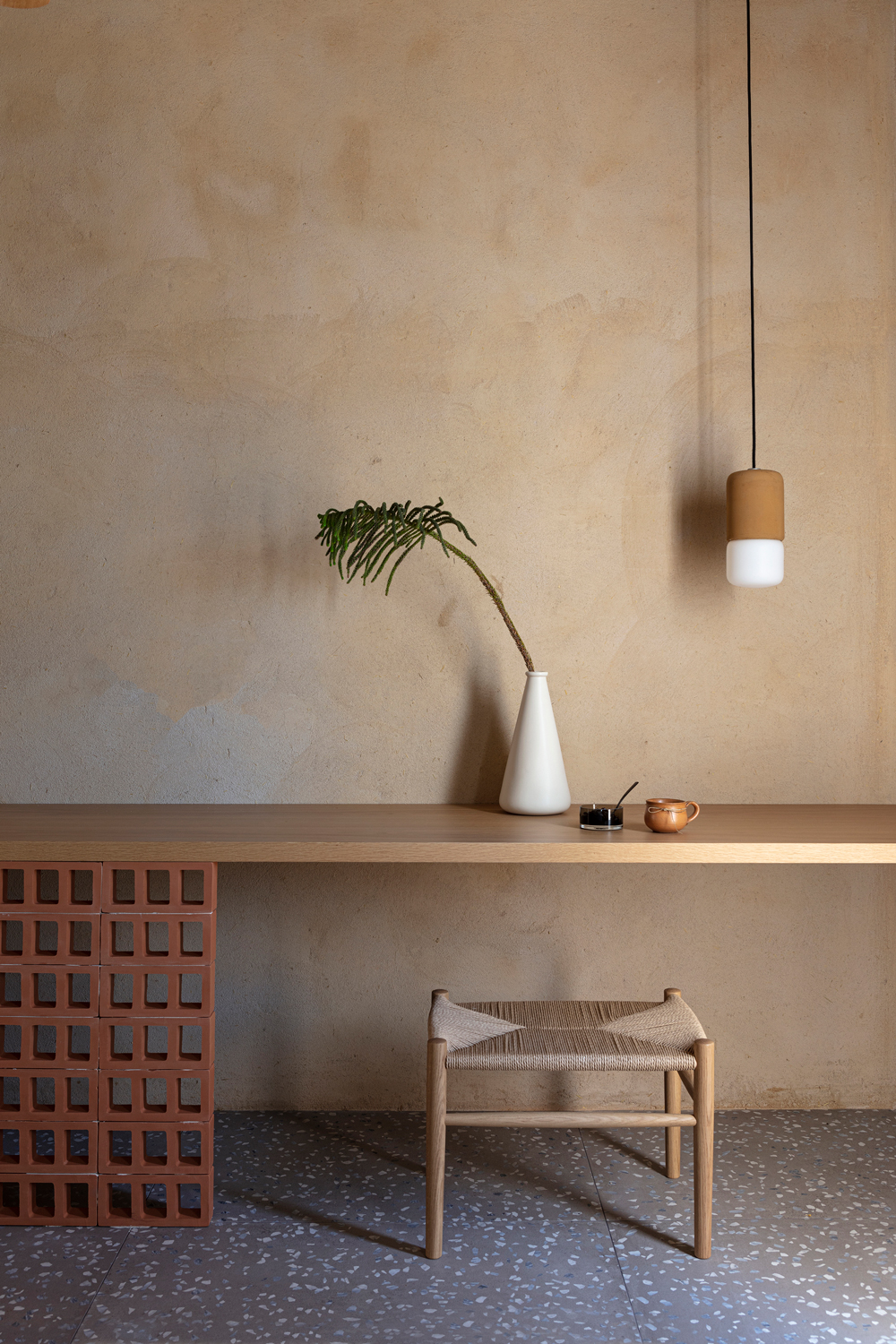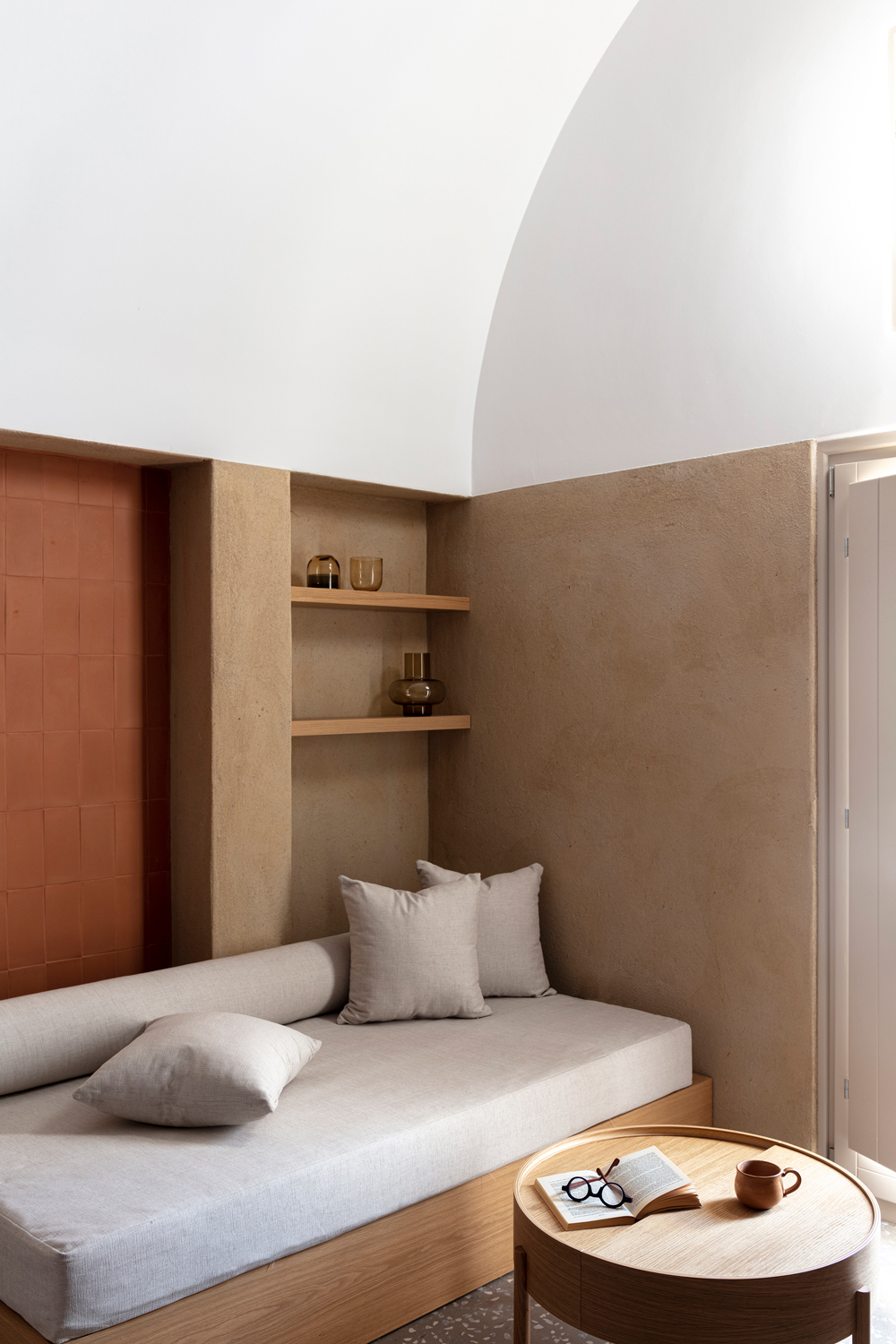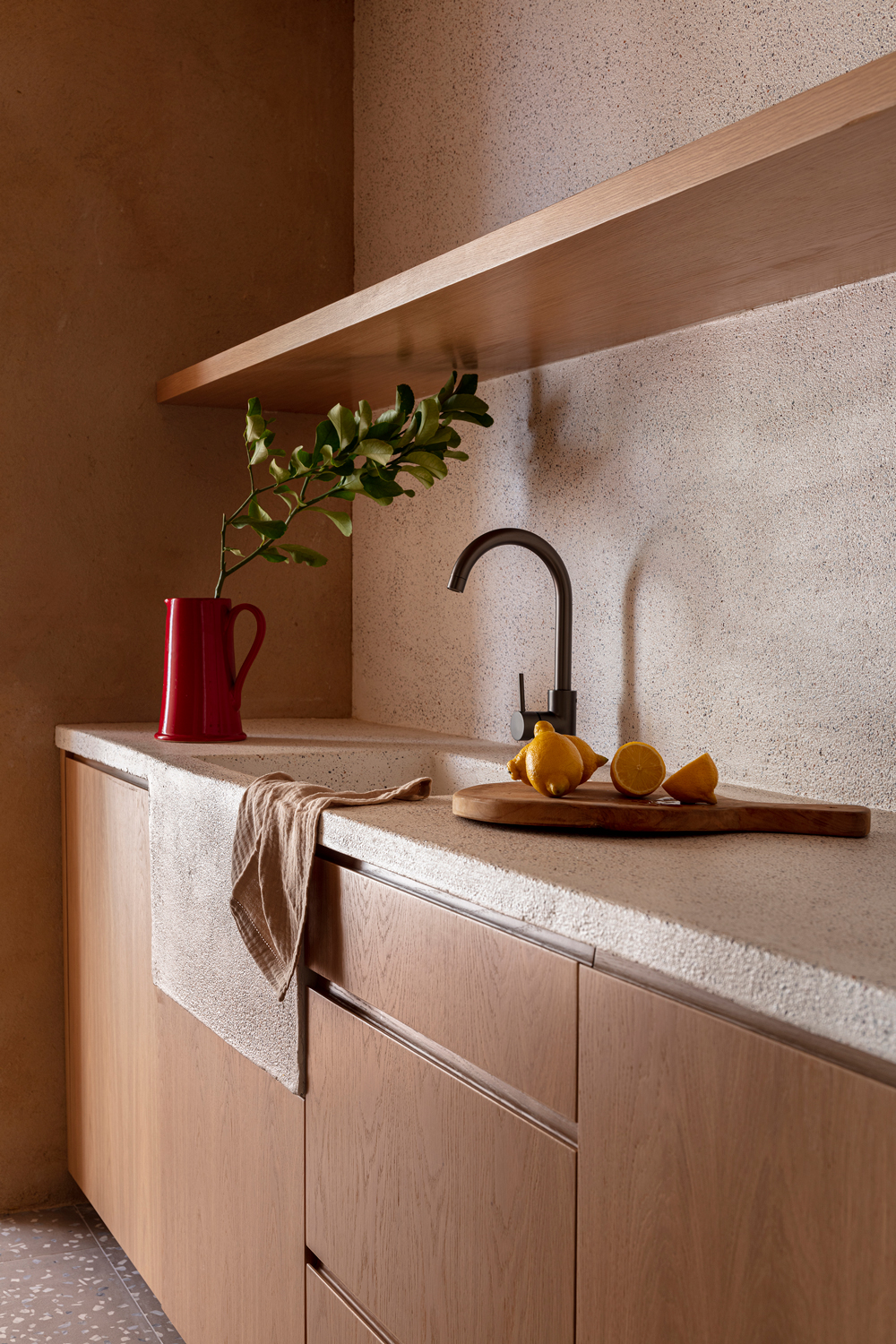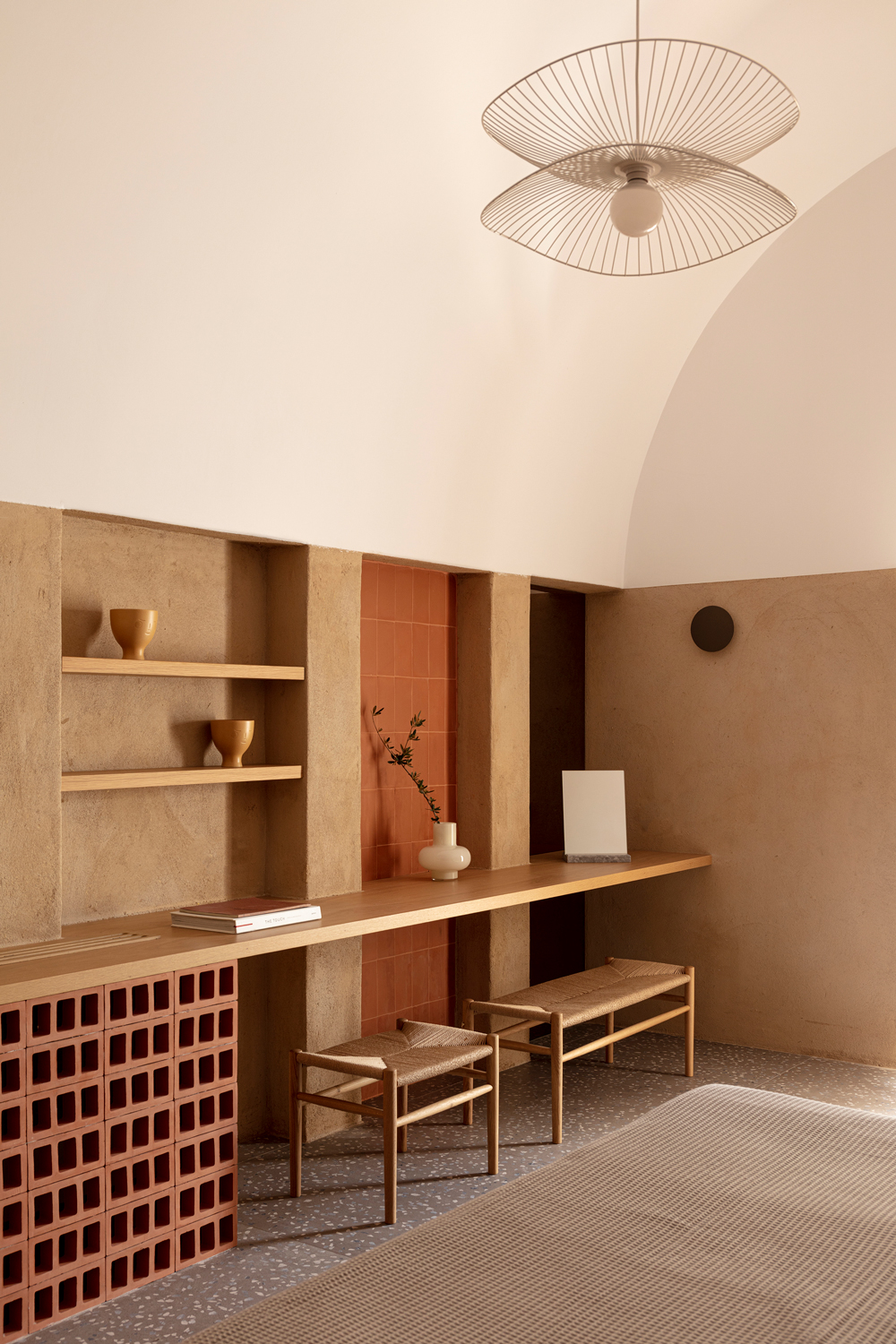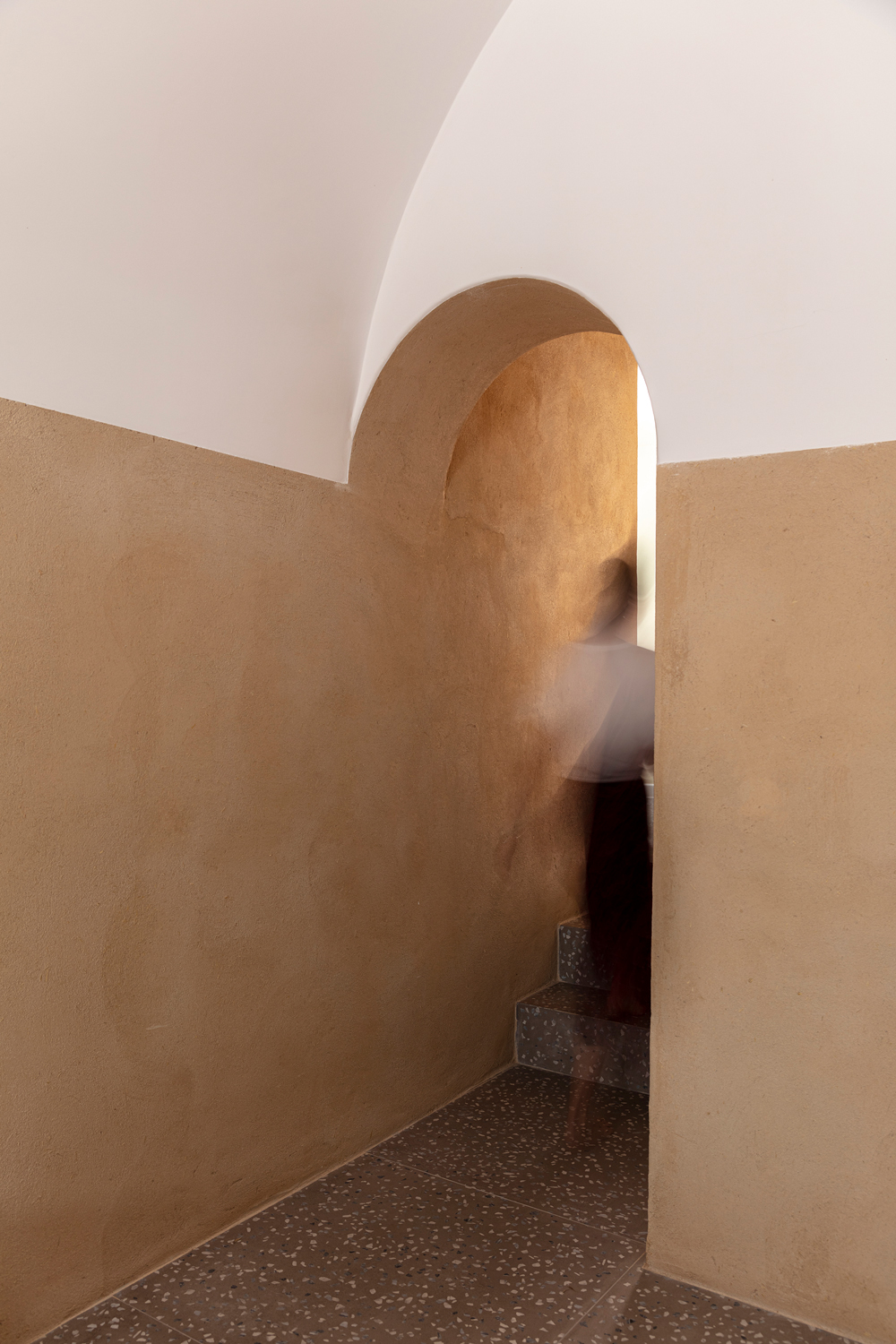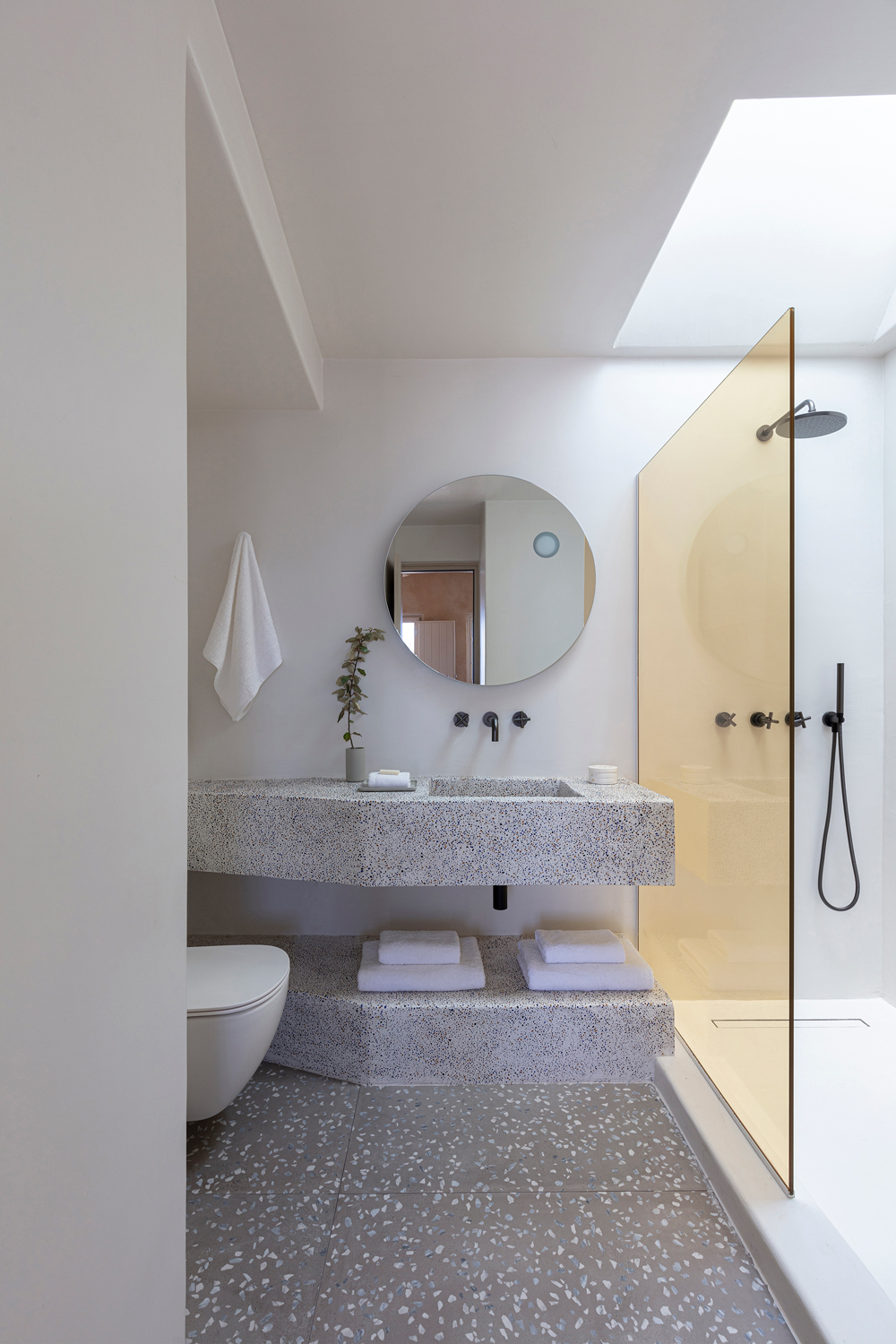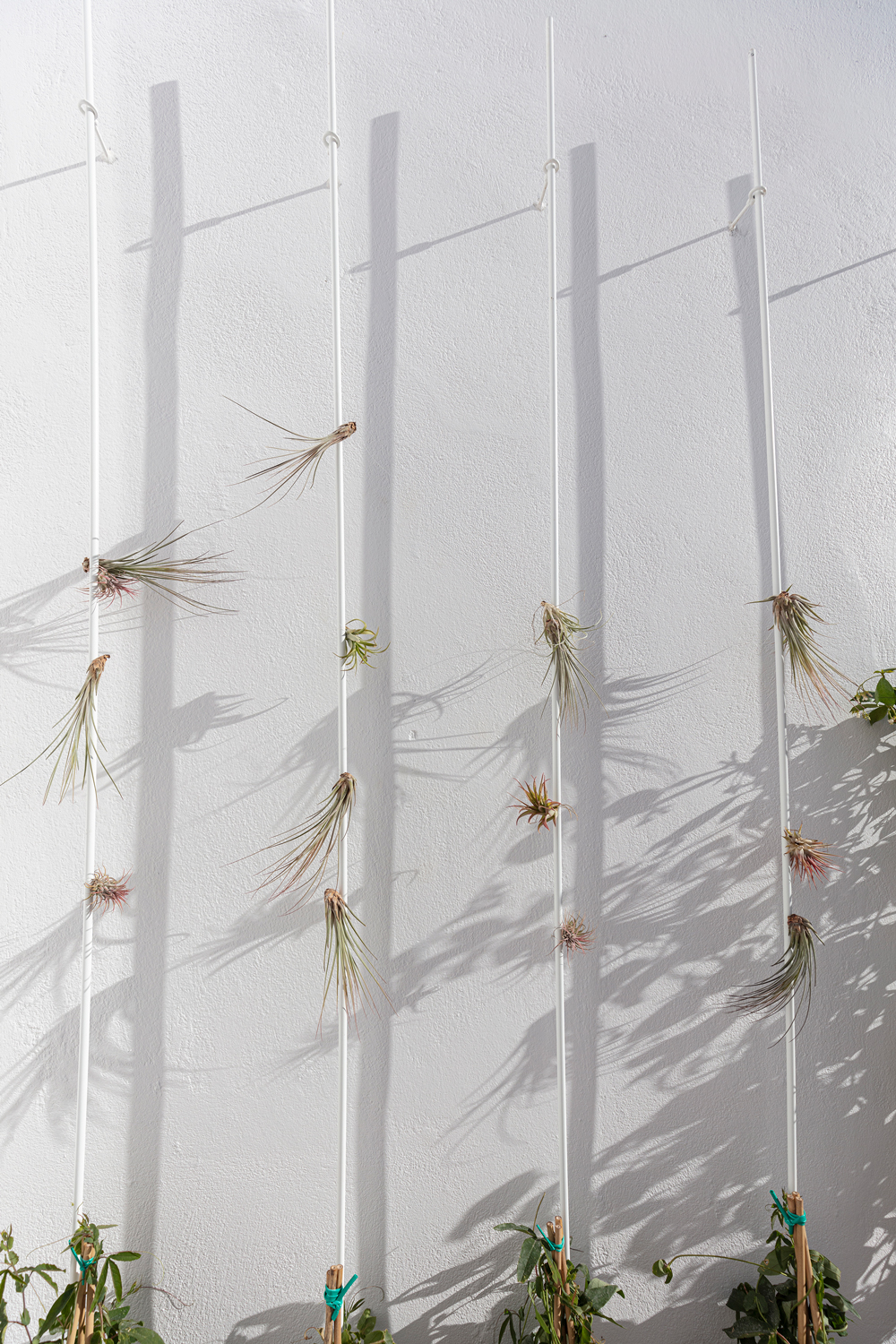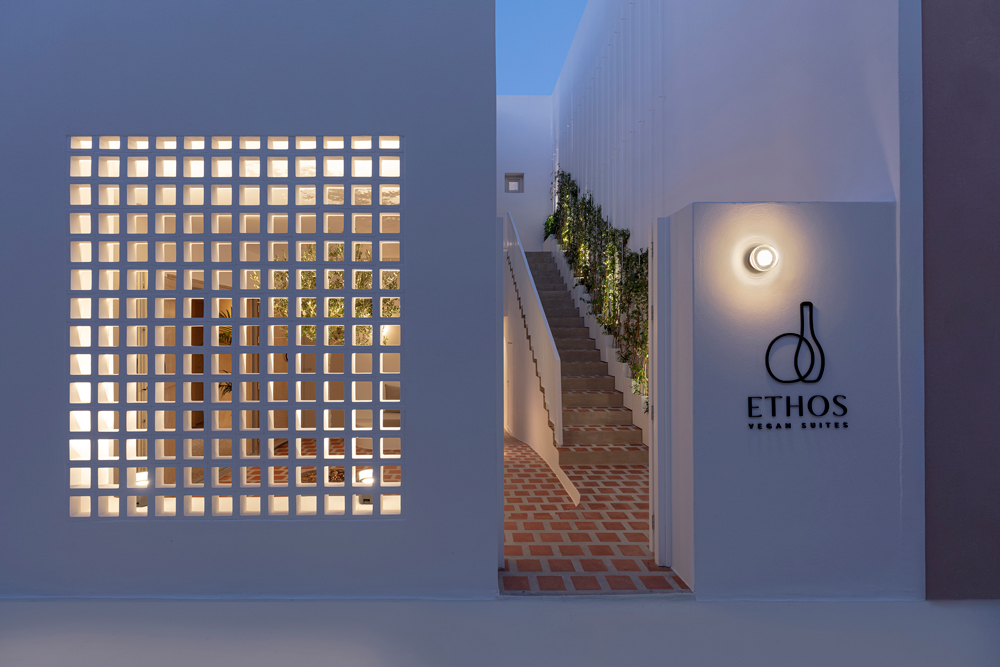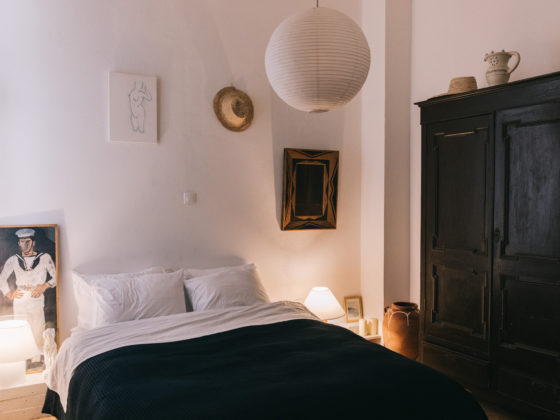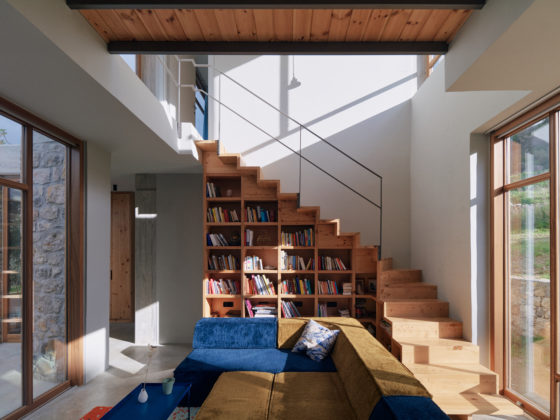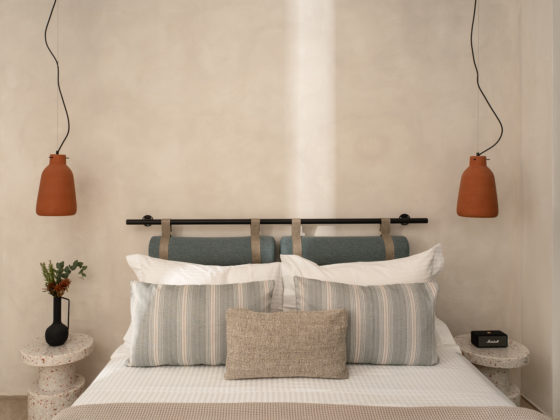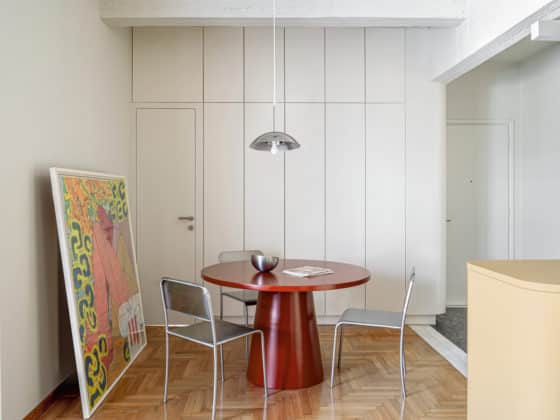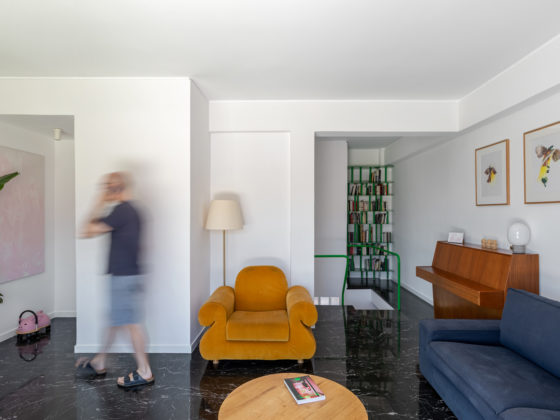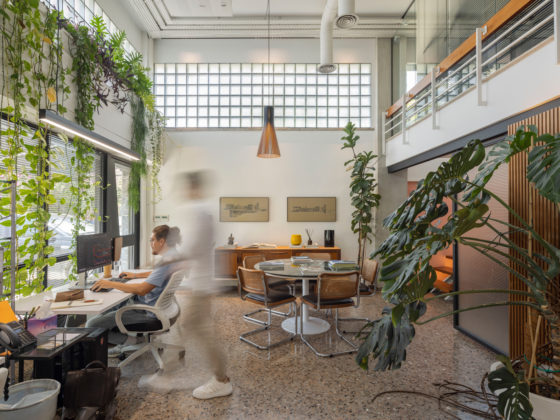Kapsimalis Architects has converted an old, two-storey family residence, -originally built after the 1956’s earthquake of Santorini-, into a small vegan hotel in the center of Fira village. On the ground floor, the hotel consists of two suites featuring a bedroom-sitting area, a kitchenette, a bathroom, and their exterior yard with a small pool-lounge area, as well as a small reception/kitchen. Moving up on the first floor, three more suites are added, accessed through an open, vertical, green staircase, comprising a bedroom, a kitchenette, a bathroom, and a balcony or terrace with a small pool-lounge area, with views to the eastern side of the island and the Aegean sea.
Upon entering a common semi-outdoor living space, via the pedestrian street, guests walk through a welcoming space that works as a meeting point for interaction regarding island sightseeing, vegan cooking, and sustainability. On the top, a part of the terrace is planted with aromatic herbs and local vegetables, used for the hotel’s vegan plates and drinks. Given the characteristic geometries and forms of the existing outer shell of the building that were maintained and restored, Kapsimalis architects aimed to create create a contemporary architecture that makes reference to the cubist morphology of the white-colored village of Fira. Stairs’ and balconies’ parapets, decorative cornices, and parts of the exterior wall that encloses the semi-outdoor yard were removed or replaced.
In order to turn the former residence into a modern structure, several additions were made such as white thin metallic handrails for protection, and solid or perforated walls, made by diverse types of ceramic claustra creating different kinds of private or semi-private areas letting the wind and light in, as well as a new staircase that leads to the terrace. One of the main goals was to incorporate the vegan way of life into the design. The architects have translated the hotel’s commitment to veganism and sustainability into a space created with recyclable materials such as ceramics, clay, stone, oak wood, mortar, cotton, hemp, linen, etc.
To achieve the most of this perspective, products made by local craftsmen, earthy tones, plants, and greenery were used, and water features were added, assuring that natural light and fresh air flooded the spaces. The building was designed with the use of new technology to function with less energy consumption, considering all these parameters to create biophilic and sustainable spaces that enhance calmness and balance.
For the exterior materials, small ceramic red squared tiles were placed on the floors, filled with natural beige mortar, creating a pattern. The building’s walls and the perforated dividers made of ceramic claustra were painted in an off-white color to fit with the surroundings. Beige zellige handcrafted clay tiles cover the small pools inside and outside with a bit of shine. Vertical white thin metal strings that end up in pots with climbing plants, transform the party wall of the hotel into a green surface. The pergola placed on the balcony of the upper suite, the main door of the reception, and the doors and windows of the building were inspired by old traditional carpentry techniques. In the same direction, the interior floors were covered by large squared tiles in brown/grey color, enclosing small ceramic remnants and tesserae.
The interior walls and ceilings of the suites and the common spaces were lined with rough plaster containing hemp, sand, and cobs. The vaulted ceilings of the two suites on the ground floor were covered by smooth white plaster for the form of the vault to emerge. Off-white, local cement mortar was used to cover the surfaces of the bathrooms. Glass partitions in yellow and green colors are used as dividers between the shower area and the rest bathroom. Two kinds of materials consisting of plaster and recyclable stones or colorful, recyclable glasses, are used to cover the kitchenettes’ and bathrooms’ sinks accordingly. The wardrobes and the shelves are made of natural oak. Thin, rectangular, terracotta tiles are used to cover parts of the interior walls, in combination with the ceramic claustra in its natural red color that are used to support wooden desks and to hide the air- condition machines. Mirrors in bronze color, black metal elements, custom tables made of travertine marble, lights made of clay, colorful glasses, wood, and metal, and furniture in the same color palette and materiality, complete the interior design, bringing nature into it and giving a sense of uniqueness and craftsmanship.
The project experiments with the design possibilities of transforming an existing two-storey building, into a place that serves the vegan ethics and style of life, providing wellness, warmth, hospitality, calmness, and the experience of authentic island holidays. The hotel works as a hidden gem in the middle of a very dense settlement like the village of Fira.
